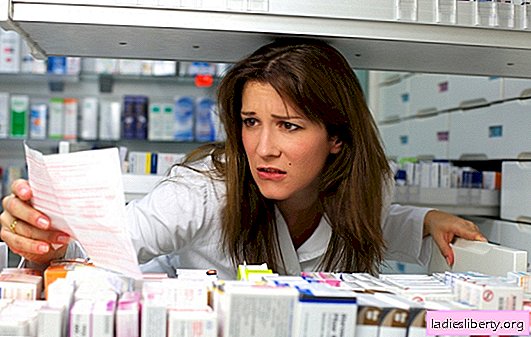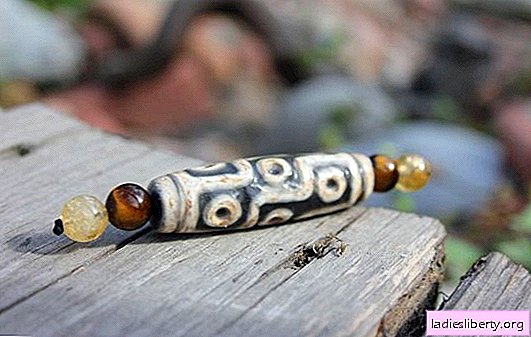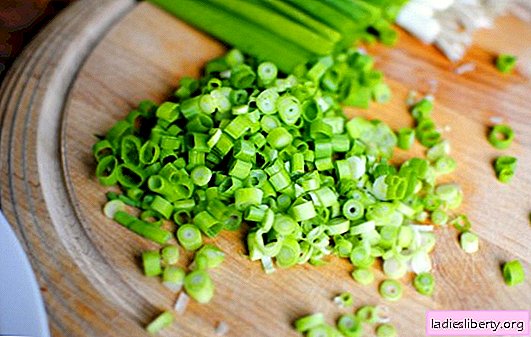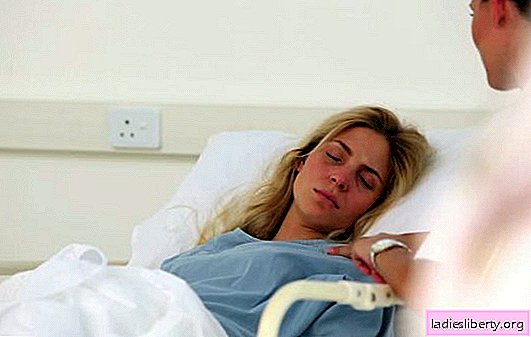
Rosacea - rosacea, pink acne, rosacea - the most unpleasant form of acne on the face. Appears mainly in people of mature age (about 50 years), refers to inflammatory skin diseases of a non-infectious nature.
Rosacea on the face, the signs of which can appear in certain places, disappear, occur in new areas of the skin, is manifested by redness, vascular asterisks, nodes, pink acne on the cheeks, chin, nose, forehead.
Most often, women suffer from this disease (60%). In men, rosacea on the face is less common, but occurs with great complications.
This pathology is found in approximately 10% of the population. Most often, fair-skinned and red-haired suffer, although it is characteristic of all races.
Rosacea on the face - causes
The underlying cause of the disease has not been established. When rosacea appears on the face, the causes leading to its occurrence and spread can be varied. But there is still no proven data on the specific etiological factors of this disease. Research and the search for the causes of rosacea on the face continue to this day and so far they have not been clearly identified.
It is believed that the most common and probable cause of rosacea on the face is tick of the genus Demodex folliculorum. Although they are physiological representatives of the microflora of the skin, but with age, their population of follicles increases. Although in some cases, with rosacea, ticks are not found. Or, if a tick is detected, it may not be the cause of the disease.
Excessive use can provoke the development and spread of rashes:
• hot and strong coffee and tea;
• alcohol;
• spices;
• citrus;
• meat;
• certain medications (corticosteroid ointments lead in some cases to steroid rosacea);
• frequent stresses.
There are a number of predisposing factors leading to the development of rosacea:
• digestive system pathology (it is assumed that the presence of Helicobacter pylori in the stomach can lead to the onset of the disease);
• endocrine diseases (diabetes mellitus, menopause, etc.);
• immune disorders;
• allergic dermatitis.
Rosacea on the face - symptoms
Most often, rosacea appears on the face, its symptoms are diverse, so the course of this pathology is divided into several stages:
1. Initial (erythematous) - characterized by hyperemia of the nasolabial triangle. Redness can trap the cheeks and also go to the neck, chest and back. Gradually, spider veins, peeling of the skin and edema occur at the site of the lesion.
2. Stage of papulo - pustular manifestations: acne and pustules form on the skin. They exist for several weeks. With prolonged exposure to the open sun, they turn into "solar comedones", eventually spreading throughout the face and scalp, causing itching and pain.
3. The phimatoid stage is a far-reaching case of the disease. The skin has a tuberous appearance, there is a thickening of the nose, auricles, forehead skin. Most often observed in men: cyanotic pineal nose with a bright mesh of dilated blood vessels. The skin on the forehead, earlobes, eyelids and chin may have the same appearance.
Rosacea on the face - signs
If rosacea occurs on the face, its signs depend on the stage of the disease.
The most characteristic:
• inflammation of the skin from light pink to bright red patches of skin, depending on the stage of the disease;
• the presence of blackheads and pustules of various colors;
• itching and burning in the affected skin;
• thickening of the skin in certain areas of the face;
• peeling and edema at the lesion sites;
• crimson - blue thickened nose with a vascular network (mainly in men);
• crimson face with edematous form.
With the development of rosacea on the face, the symptoms listed above do not appear at the same time. This usually occurs gradually, corresponding to the stages of the disease.
Currently, there are several special forms of rosacea on the face:
1. Lightning fast - develops rapidly, affects the skin on the face in the shortest possible time, disfiguring it, very difficult to treat, occurs in women during hormonal failures (pregnancy, menopause).
2. Rosacea - lymphoedema - manifests itself as severe edema with inflammation of the skin; the face looks purple - edematous; there are no painful sensations, it causes many psychological problems.
3. Conglobate rosacea - characterized by the appearance of large spherical formations on the face (conglobates), developing after the use of drugs containing bromine or iodine.
4. Steroid - appears after prolonged use of hormonal ointments; causes serious abnormalities in the endocrine organs.
Rosacea on the face - treatment
Hope that the disease is "cured" is not worth it. It is necessary at the first signs to consult a dermatologist who, by the characteristic appearance of the changes in the skin, will diagnose and prescribe treatment. In some cases (with already developed complications), an additional examination will be required:
• Bakseeding on pathological microflora;
• analysis of scraping of the dermis;
• a general examination to identify the pathology of other organs and systems that provoked the disease.
At the initial stage of rosacea on the face, treatment is successful. In advanced cases of rosacea on the face, treatment requires a long time, the use of many medications and is not always successful.
With the development of rosacea on the face, treatment includes various techniques and the use of drugs of several groups that affect the pathology of the digestive system, nervous and endocrine systems.
Widely used (used only as directed by a doctor):
1. Metronidazole and its analogues - as an antimicrobial drug, especially with the existing pathology of the stomach, locally - Metrogil.
2. Antibiotics of the tetracycline series (Doxycycline, Monocycline, etc.).
3. Locally - hormonal and anti-inflammatory creams, gels, ointments that affect the inflammatory process, restore and even out the skin (Rosex, Rosamet, Skinoren, etc.).
4. With a pronounced vascular component - vitamins C, PP, contributing to the strengthening of the vascular wall (Ascorutin, etc.).
5. With severe itching and an allergic component, desensitizing therapy is prescribed (Tavegil, Loratadin, Tsetrin, etc.).
6. Various sedatives based on medicinal herbs (motherwort, valerian, sage).
Physiotherapeutic methods of treatment are also effective:
• laser;
• cryotherapy;
• carbon monoxide (dry ice);
• high-frequency light.
These methods eliminate skin lesions, selectively dilated vessels coagulate, inflammation is eliminated, and recovery processes in the affected areas of the skin are stimulated.
Without fail, with rosacea on the face, treatment includes diet food:
1. All provoking factors are excluded - spicy, salty, smoked, canned food. For the duration of treatment, you should refrain from sweets and certain fruits (pears, grapes, citrus fruits).
2. It is necessary to exclude alcohol, hot strong tea and coffee.
3. In severe cases, fasting may be prescribed according to indications.
Recommended:
• lean meat and fish, preferably steamed;
• boiled potatoes and eggs;
• greens and vegetables;
• cereals and lactic acid products;
• crackers or stale bread.
Rosacea on the face - prevention
To prevent the development of rosacea on the face, prevention consists, first of all, in eliminating prolonged exposure to the sun without protective creams, overheating, and also hypothermia of the skin.
To keep your skin healthy, you should not neglect proper nutrition and avoid drinking large amounts of alcohol, spicy, oily, sweet food.
It is necessary to use cosmetics for the face, which include horse chestnut extract and vitamins C, PP, which protect and strengthen the vascular wall.
Stop smoking, because nicotine causes changes in the vessels.
Timely correct the pathology of the digestive, endocrine and immune systems.
Avoid getting hair spray on the skin and face and exclude the use of cosmetics containing alcohol and irritants.
In case of changes in the skin of the face, consult a dermatologist in a timely manner and follow all prescribed instructions.
With a careful and attentive attitude to the skin of the face, you can preserve its health and beauty without much effort.











